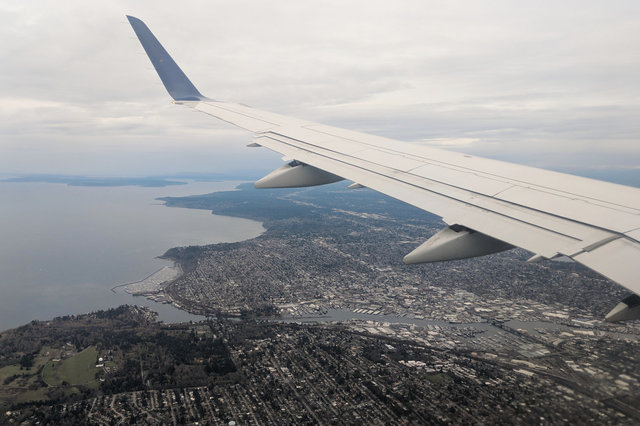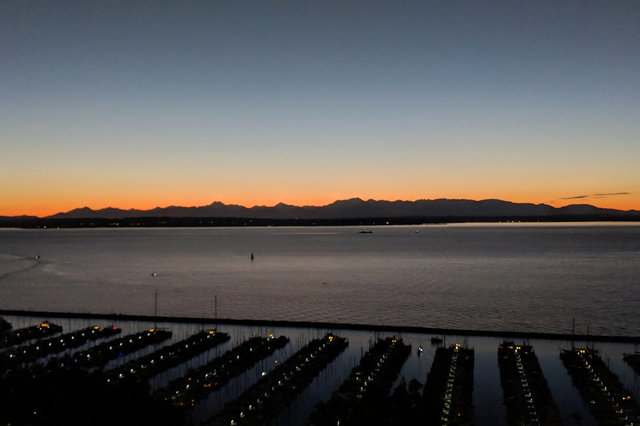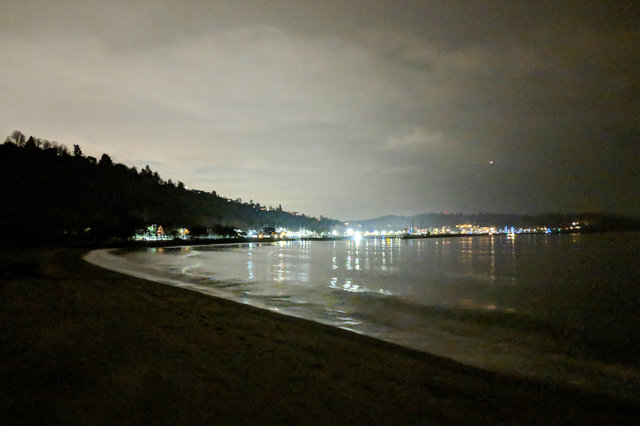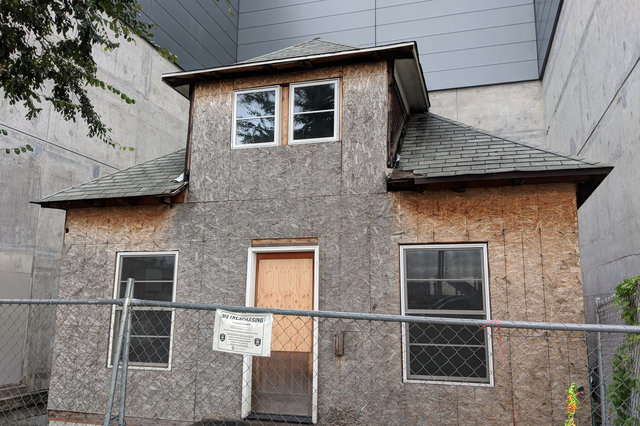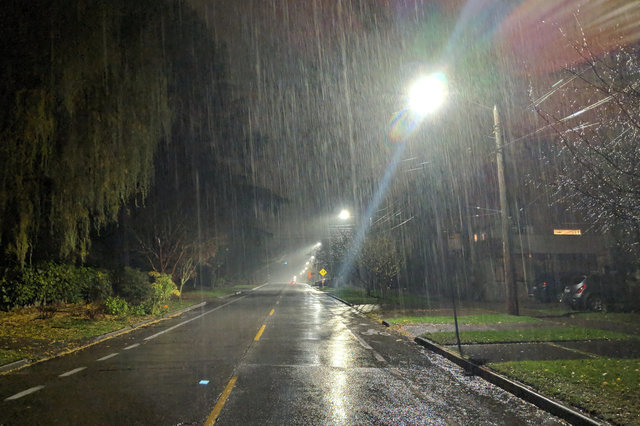Living in Ballard
Started: 2019-01-19 10:28:21
Submitted: 2019-01-19 18:55:01
Visibility: World-readable
In which the intrepid narrator adapts to living in Seattle, with mixed results
When we moved to Seattle, to give us a place to stay while we figured out where we were going to live permanently, Kiesa rented a furnished house from a couple who had just retired and was going on a sabbatical. The house was in the suburban Seattle neighborhood of Ballard, in the north-west corner of the city.
Ballard is the whitest place I've ever lived -- which is saying something, since I lived in Boulder. Originally Ballard was settled by Scandinavian immigrants who worked on the fishing fleet in Salmon Bay, and parts of the neighborhood retain the industrial character. (I am told that a large portion of the American Pacific fishing fleet is based in Ballard, though I haven't bothered to look up the stats. I can confirm that I saw fishing boats on a regular basis.)
Ballard's Scandinavian history led to the foundation of the Nordic Heritage Museum in the neighborhood. The museum operated out of an old brick school until last year, when it moved into a massive new building spanning a city block next to the central strip.
I was amused by the "Ballard Today" section of the mural in front of the old site of the Nordic Heritage Museum, showing some sort of rail vehicle (possibly a monorail, probably traveling on an elevated viaduct) bound for Ballard. Seattle is just now planning how to build a light rail line to Ballard, which probably won't open for another twenty years.
Ballard's central strip, along Market Street* and Leary Way, is a charming mixture of old buildings and new modern construction, almost completely overrun by hipsters, while clearly in the throes of gentrification. On my first full day in Seattle I found Ballard Coffee Works, which became my new favorite coffee shop in Ballard.
[* A name which brings to mind a much more important street in San Francisco.]
Close to the central strip are the Ballard Locks, a pair of shipping locks designed to span the gap between the tidal saltwater Puget Sound and the freshwater of Salmon Bay, connecting along a long ship canal to Lake Union and Lake Washington. (I visited the locks with Kiesa in 2001.) On summer weekends the locks are overrun by pleasure boats; at all times of the year fishing boats sail out through the locks and return with grizzled, weary crews standing on the decks ready to return to port.
I started walking in the evenings, after dinner, to get out of the cramped house and try to explore more of the neighborhood. From the rental house I could walk to the Ballard Locks, or to the marina at Shilshole Bay, or to the view from Sunset Hill.
On clear nights Sunset Hill lived up to its name, showing a view of the Puget Sound and the Olympic Mountains beyond.Our rental house was perched on the hill above the Puget Sound, closer to Sunset Hill than central Ballard, in a residential neighborhood where 100-year-old Craftsman houses sat quietly next to striking newly-built modern houses. This left us isolated from central Ballard, and from the city's transit system.
The bus system in Seattle (and, basically, all infrastructure in the city) is designed to get commuters to and from their office jobs downtown. Kiesa found a commute-hours-only express bus that took her downtown, but I worked in Fremont and had no such luck. The best I could do was to walk fifteen minutes to 24th Ave North, then wait for bus 40, whose adherence to its schedule was sketchy at best, bump around the roads in need of maintenance (threatening to give me motion-sickness if I tried to read much of anything), stopping every block or two, and finally dropping me off across the corner from my office in Fremont.
I gave up on the bus for my commute on my second day in Seattle, when I just missed the bus that would take me back to Ballard in the evening, and Google Maps told me the next bus wouldn't arrive for fifteen minutes. I found a Lime bike on the Burke-Gillman trail and rode instead, arriving faster than if I had taken the bus.
I switched my commute to my bike, which had languished in the garage while I lived in San Francisco (and had never quite recovered from driving from Boulder to San Francisco on the back of my car in a snow storm). This worked well enough, at least during the summer. My office had a secure bike cage in the parking garage, a short walk from my desk. I biked in cycling shoes and a breathable tech t-shirt, then changed into regular shoes and a collar shirt when I got to work. The route led along the Burke-Gillman trail, except for a gap along the waterfront in Ballard where local industry objected to a bike path through their neighborhood and started concern-trolling about bikes riding next to big trucks.
My route through Ballard involved climbing a non-trivial hill, and to amuse myself on my ride, I'd try to remain in a high gear while ascending the hill. One day I passed a cyclist struggling up the hill, who cried out plaintively "Jealous!" as I passed.
Then the weather turned, and the sunny and dry Seattle summer gave way to an unsettled and unpredictable fall. After a couple of wet rides, it became clear that my cycling gear, optimized for Boulder, was not up to the challenge of the Seattle fall -- which bode poorly for the winter to come. I tried riding the bus again, which proved just as frustrating as my first attempt (though was, at least, somewhat dryer than riding my bike; and then I gave up and drove to work.
I haven't driven regularly to work in six years, since moving to Boulder in 2012, where I lived a mile from work, and the climate let me bike to work most of the year.** I have never driven to work at my Google office: In San Francisco I took the train, and when I went to Mountain View I took the shuttle bus. (I have driven to work at the Google office in Boulder, and to the data center in Council Bluffs.) Driving to work felt like I was betraying my values, and like I was going backwards six years; but at least I was warm and dry and I wasn't willing to be miserable just to stay off the road.
[** I know there are people who bike in Seattle in the winter. If you are one of these people, please let me know and we can meet at REI and you can tell me what to buy so I can stay warm and dry.]
After a two-year hiatus, I started playing Pokemon Go again to give me an excuse to discover things in Seattle. While playing the game I discovered things I wouldn't have otherwise noticed, including the Edith Macefield house, which inspired the movie Up: a tiny house surrounded on three sides by concrete walls of a large commercial building (including, it urns out, my new dentist). Ms. Macefield refused to sell her house while she was alive as the neighboring houses were gobbled up by the block-sized development; but now the house sits, derelict, on a commercial street, with no clear future, with some desultory balloons hanging from the fence.
On my penultimate night in Ballard, shortly before moving to our house in Wallingford, I tried to nip out for a walk when it wasn't obviously raining, and ended up caught in a heavy rain storm -- which at least gave me the opportunity to take a dramatic picture of the rain falling on 32nd Ave North. It was Ballard saying goodbye to me, one last time.

